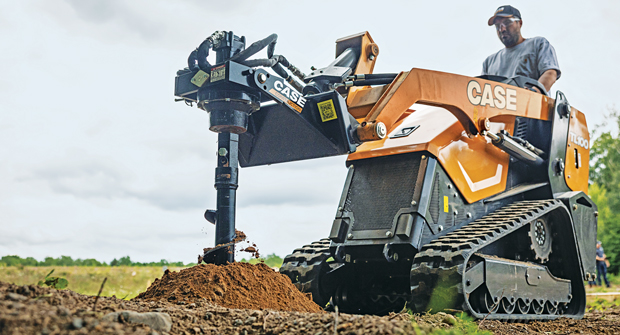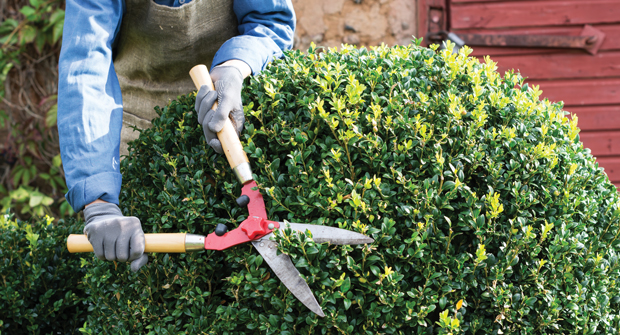The equipment attachments landscape contractors use can affect all aspects of your design/build projects, including efficiency and the bottom line.
Experts from Ignite Attachments, John Deere, Case, Bobcat and Takeuchi share how to know which attachment is best for your job.
Decide by service
Attachment categories to consider include grapples, augers and buckets, says Darin Gronwold, product specialist senior at Ignite Attachments. Grapples can be used for scooping, sifting, moving or ripping. Grapple types include industrial, rock, root, rake and specialty.
Augurs are useful attachments, especially for professionals who offer fencing or deck installation services. Buckets help with scooping, scraping and hauling, though they don’t provide as much versatility as a grapple, he adds.
“If you are mostly hauling dirt or gravel, you probably don’t need a severe-duty option (bucket),” says Gronwold. “On the other hand, if demolition and debris removal are a frequent task, paying for the upgrade will provide ROI over the lifetime of the attachment.”
He encourages contractors to think carefully about choosing attachments with several moving parts, like breakers since those require more maintenance.
Prep your site
Landscape contractors should consider attachments related to clearing and preparing the land, says Emily Pagura, product marketing manager at John Deere.
“Rock grapples and root rakes help clear large rocks, roots, root balls, brush and other debris, while leaving behind the dirt,” she says. “Power rakes can efficiently clear debris, aerate soil and create a level surface to prepare the ground for seed or sod.”
Rotary cutters, stump shredders and mulching heads can make quick work of larger debris, she adds. Pallet forks and buckets are efficient at moving materials and trenchers and augers are ideal for digging trenches and holes.
Match to the machine
Core attachments landscape contractors should have are buckets, pallet forks and grapples, according to Ryan Anderson, product manager of subcompact equipment, and Gustav Krejcha, product marketing manager of construction equipment attachments at Case Construction Equipment.
Adding augers, trenchers and soil conditioners can diversify the job scope and size. Tools like hydraulic breakers, four-in-one buckets, brush mowers, tree spades and land planers will expand the contractor’s ability to quote and win more jobs more effectively, according to Krejcha and Anderson.
Finding the proper fit and prioritizing hydraulic flow requirements and case drain capabilities are also important, according to Anderson. He stresses that contractors should be mindful of the size and weight of the attachment to make sure it’s appropriate for their equipment.
Mike Fitzgerald, marketing manager at Bobcat, adds that landscape business owners should start with the most popular attachments and grow based on their customers’ needs and projects.
By keeping an attachment usage log, contractors can see where they’ve lost business due to not having the right attachment. Also, understanding what attachments their competitors are using may help them realize a gap in the market.
“If there’s an in-demand application supported with a certain attachment, your company could become the go-to landscape business for that attachment, further growing your overall business opportunities,” Fitzgerald says.
Now and later
Choosing the right attachments can make a landscape operation more efficient and productive, improve bottom lines and decrease the safety risks, says Lee Padgett, product manager for Takeuchi.
Popular options include buckets for digging and grading, grapples to move heavy materials, root rakes to pick up materials that are long or oddly shaped, soil conditioners to aid in final soil preparation, tree booms to pick up and place bushes/trees and tilt rotators to work in smaller areas.
“Don’t look at that one job,” Padgett says. “We encourage contractors to look at how that purchase could help them over the long run.”


